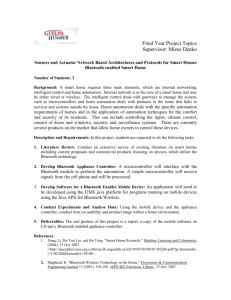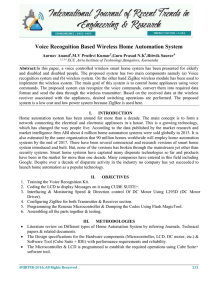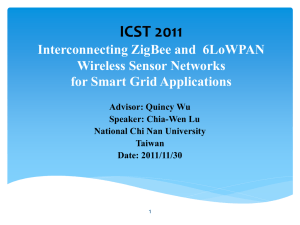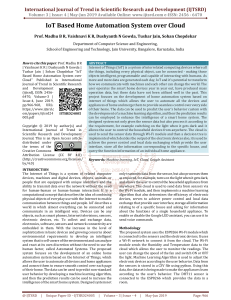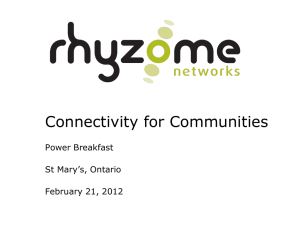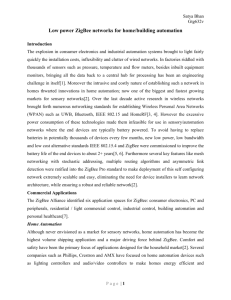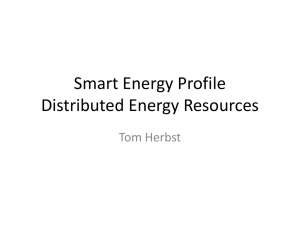SSIA Summit Presentation Oct 2014 – FTDIChip
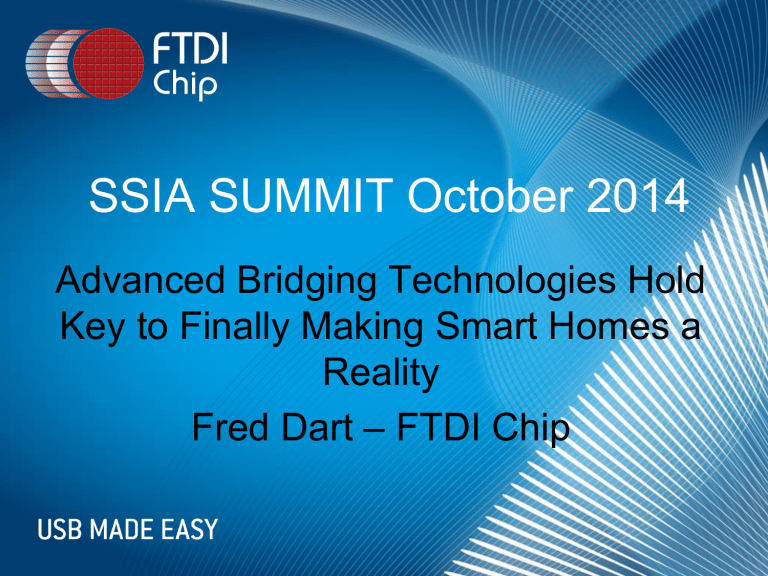
SSIA SUMMIT October 2014
Advanced Bridging Technologies Hold
Key to Finally Making Smart Homes a
Reality
Fred Dart – FTDI Chip
Introduction
The employment of technology to monitor and control basic domestic functions automatically is a concept that is far from new.
For well over a decade now the possibility of creating what have become known as ‘smart homes’ has gained a great deal of media attention
- promising enhanced comfort, improved safety and higher energy efficiency levels within the places we inhabit.
Introduction ctd.
Until now though actual takeup has been very limited.
Reasons for this include –
- High cost of implementation
Different technologies which don’t talk to each other
- Low communication speeds give poor response times ( X10 for example )
- Limited connectivity
Home Automation Summarised
• Typical view of a Home Automation System
Sensors
- Motion
- Temperature
- Light
- Occupancy
Communications
System Controller
Communications
Actuators
- Lamp
- Camera
- Blinds
User Interface
Buttons
Touch Pad
Internet
Smartphone
Common Networking Technologies
Wired
Wireless
Powerline
6LoWPAN
Home Automation in the news
Examples of New Wireless Home Technology
• Philips Hue Lighting
- Zigbee + WiFi
• LiFX Lighting
- 6LoWPAN + WiFi
• Nest Thermostat
Benefits / Problems of New Technology
Benefits
Finally, low cost wireless communication becomes a possibility.
Mass adoption drives the cost down finally making the possibility of affordable Smart Homes a reality
Issues
A lack of common standards for devices – inability to link devices together
Over reliance of mobile phones as the control point
* Too many different apps with no common look and feel
* Lost mobile phones
* Friends and Family unfriendly
No common approach to security for internet connected devices
Content
• Home Automation Overview (see Home Automation.pptx
)
– Definition
– Technology
• Application Roadmap
• Pilot Project - Proof of Concept
– System Concept and Objectives
– Hardware and Software
• 2 nd Step
– Sneak Preview
Alternative System Concept
Communications path
Wi-Fi Direct
Wi-Fi
SPI UART
Zigbee
FT900
SPI
Communications path
RGB
FT800
Touch
Touch
Display
• Zigbee enabled light bulbs are arranged in a mesh network.
• Control, i.e. turning on or off, dimming, can be done via
• FT900 + FT800 platform.
• Smart phone.
• Smart phone is connected to the FT900-FT800 platform using Wi-Fi Direct.
• GUI on the smart phone and the touch screen display have the same look-and-feel .
Objectives
• Proof-of-concept for a home automation smart bridge based on the
FT900 + FT800 platform, bridging Wi-Fi to other common wireless technologies such as Zigbee , 6LoWPAN etc…
• Build the required hardware and software blocks which can be subsequently implemented in a home automation smart bridge.
FT900+FT800
Technology Demonstration
